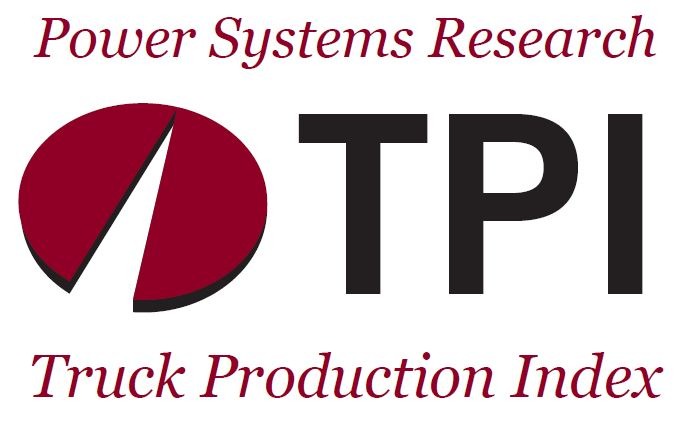The Power Systems Research Truck Production Index (PSR-TPI) decreased from 115 to 109, or 5.2%, for the three-month period ended March 31, 2019, from the fourth quarter of 2018. The year-over-year (Q1 2018 to Q1 2019) change for the PSR-TPI was basically flat, moving from 110 to 109, or .91%.
The PSR-TPI measures truck production globally and across six regions: North America, China, Europe, South America, Japan & Korea and Emerging Markets.

This data comes from CV Link™, the proprietary database of commercial vehicles maintained by Power Systems Research.
Here is the analysis of changes by region.
Summary: Commercial truck demand in North America and portions of Eastern Europe are expected to be relatively strong for much of the year while most other regions are experiencing a slowdown. However, no regional recessions are expected.
Global Index: Much like the global economy, medium and heavy truck demand is expected to slow this year and into 2020. Currently, a global recession is not forecasted. However, a cooling off is expected. According to IHS Markit, global GDP was 3.2% in 2018 and is expected to edge down to 3.1% in 2019 and 2.9% in 2020.
North America: Medium and heavy commercial truck demand continued to be strong during the first quarter driven by the current state of the economy. Class 8 truck demand is expected to remain strong through most of the year, but a cyclical slowdown is expected toward the end of 2019 into 2020. The medium duty segment continues to enjoy strong consumer and vocational demand.
Europe: Despite the slowing European economy primarily due to weak external demand and political uncertainty, MHCV sales are expected to remain relatively strong this year. Demand in Eastern Europe is expected to be stronger than Western Europe as the trucking companies continue their replacement demand.
South Asia: After exceptionally high sales during the past two years, MHCV demand is expected to decline in 2019 primarily due to weakness in India. Truck overcapacity of 15% – 18%, along with an overall slowdown in the automotive segment will contribute to this situation. With the industry focusing on the BS-VI emission regulations scheduled for implementation in April 2020, we can expect some choppy demand toward the end of the year.
South America: Primarily driven by Brazil, MHCV demand continues to improve after several years of poor sales as a result of a weak economy. Domestic and export sales started to improve in 2017 and continued through last year. While truck exports are the main reason for this increase, domestic demand has also significantly improved during the past year.
Japan/Korea: Demand for MHCV’s is expected to decline slightly this year as both the domestic and export economies slow. Most of the production in Japan is for export which provides for very diverse vehicle markets.
Greater China: After two years of very high demand in the heavy commercial truck segment, demand is expected to decline this year primarily due to a slowing economy and relatively high truck capacity and higher truck prices partly due to the cost of emission technology and lower freight rates. The combination of a slowing economy and relatively high truck capacity, demand is expected to be soft during the next few years.
The next update of the Power Systems Research TPI will be in July 2019 and will reflect changes in the TPI during Q2 2019. PSR


